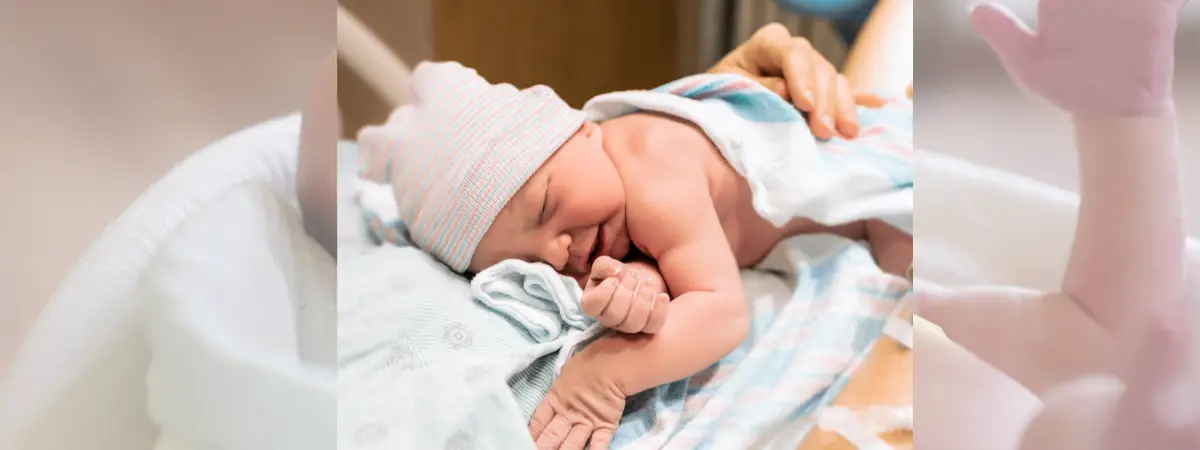Working Time
Book Appointment

Erb's Palsy, also known as brachial plexus birth palsy, is a condition that affects the movement and sensation in a child's arm due to injury to the brachial plexus nerves during childbirth. This condition can have significant implications for a child's development and quality of life. Understanding the causes of Erb's Palsy is crucial for early detection and effective treatment. Let's delve into the factors contributing to this condition and explore treatment options available.
Causes of Erb's Palsy:
Difficult Births: Erb's Palsy often occurs during difficult or prolonged deliveries, especially when there is excessive stretching or pulling on the baby's head and neck during childbirth. This can result in injury to the brachial plexus nerves, which control movement and sensation in the arms.
Shoulder Dystocia: Shoulder dystocia is a birth complication where the baby's shoulder gets stuck behind the mother's pelvic bone during delivery. This can put excessive pressure on the brachial plexus nerves, leading to injury and the development of Erb's Palsy.
Large Birth Weight: Babies with a higher birth weight, particularly those weighing over 4 kilograms (approximately 8.8 pounds), are at increased risk of experiencing shoulder dystocia and subsequent brachial plexus injuries during birth.
Maternal Diabetes: Maternal diabetes, especially when poorly controlled during pregnancy, can lead to larger-than-average babies, increasing the likelihood of shoulder dystocia and brachial plexus injuries.
Treatment Options for Erb's Palsy:
Physical Therapy: Physical therapy plays a crucial role in the treatment of Erb's Palsy, focusing on improving range of motion, strength, and coordination in the affected arm. Therapists work with children and their families to develop tailored exercise programs to promote optimal recovery.
Occupational Therapy: Occupational therapy helps children with Erb's Palsy develop functional skills necessary for daily activities, such as feeding, dressing, and grooming. Therapists may recommend adaptive equipment and techniques to facilitate independence and improve quality of life.
Surgical Intervention: In severe cases of Erb's Palsy where conservative measures are ineffective, surgical intervention may be necessary to repair damaged nerves or release tight muscles and tendons.
If your child is experiencing symptoms of Erb's Palsy, don't hesitate to seek expert care from Dr. Roshan Kumar Jaiswal, the best pediatric orthopaedic surgeon. With his specialized expertise and compassionate approach, Dr. Jaiswal ensures comprehensive evaluation and personalized treatment for children with Erb's Palsy. Take proactive steps to support your child's health and well-being by scheduling an appointment with Dr. Roshan Kumar Jaiswal today. Your child's journey to recovery starts here.
Recent Posts
- Fractures
- Spinal Arthritis
- Navigating Orthopedic Care for Children with Cerebral Palsy
- Curving the Course: Exploring Bowlegs in Children from Causes to Cures
- Straight Steps Ahead: Navigating Clubfoot with Causes, Treatments, and Expert Care
- Unraveling CETV: Exploring Causes, Symptoms, and Effective Treatments
- Understanding the Causes of Erb's Palsy: Insights and Treatment Options
- Nutrition Essentials for Young Athletes: Building Strong Bones for Peak Performance
- Understanding Pediatric Clubfoot: Treatment and Hope for Young Patients
- Understanding W-Sitting: What Parents Need to Know
- Nourishing Young Bones: Essential Nutrients and Expert Care
- Nourishing Young Bones: Essential Nutrients and Expert Care
- Understanding Acute Patellar Dislocation: Causes, Symptoms, and Treatment Options
- Safeguarding Young Athletes: Understanding and Addressing Sports Injuries in Kids
- Safeguarding Young Athletes: Understanding and Addressing Sports Injuries in Kids